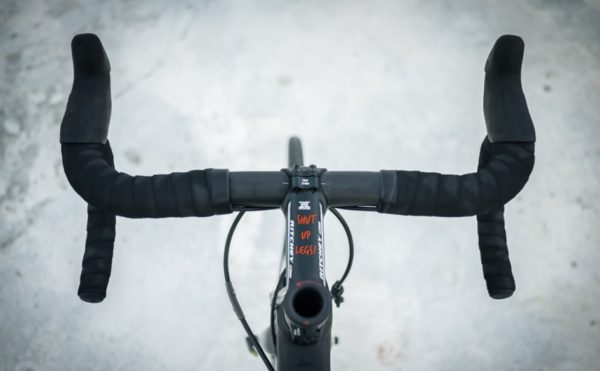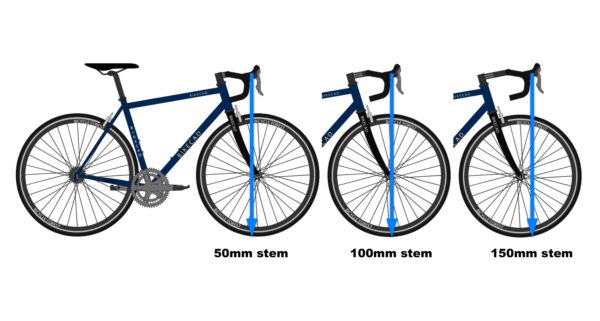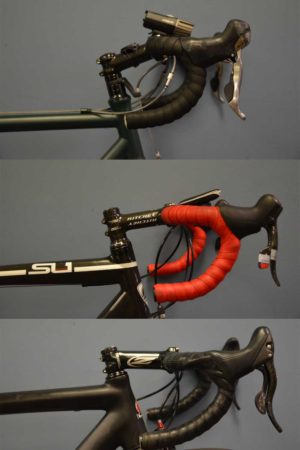When viewed in the context of an entire bike, stem length is one of the more minor adjustments you can make. That being said, it can affect the overall feel and handling of your bike in some not-so-minor ways.
Historically, stems were not adjustable or interchangeable. It wasn’t until the late 19th century when Marshall Taylor invented an adjustable stem, using a sliding clamp to move the handlebars towards or away from the rider. Now bike stem length can vary from 50mm all the way up to 150mm and beyond.
Every part of a bike is connected. So, swapping out the stem on a wrong sized bike can be a quick fix, but you have to take into account that it will effect the bike’s overall feel and handling.

What should decide bike stem length?
The first thing you need to look at is not your bike, but your own priorities when it comes to:
- Comfort
- Performance
- Steering and handling
Generally speaking, race bikes that place the rider in a low, aerodynamic position will need to have a longer stem. This also works to get more weight out in front of the wheel. In contrast, touring bikes will have shorter stems to keep the rider in a more upright position and provide responsive steering at slower speeds.
When choosing bike stem length consider:
1. Weight Distribution
Stem length dictates how much weight is placed on the front wheel . The longer the stem, the more weight will be pushing forward on the bars, making the bike more stable at high speeds. This can, however, make for a less responsive feel.

2. Steering
The steering of a bike is dictated by the head angle and trail, but the length of the stem can enhance or dull these effects. Short stems steer more like a steering wheel, providing immediate response, but can cause a twitchy feel. The longer the stem, the slower the handling can be, making it more difficult to steer at slow speeds, but more stable at high speeds.
Reversing the Stem
Reversing the stem is one of the most effective ways to make your bike more comfortable as it raises your handlebars to a more comfortable position. The majority of stems can be flipped as they are angled for two handlebar heights.
One position is aggressive and flat, the other is angled upward for a more upright torso which can alleviate stress on the lower back as well as the amount of weight on the hands. Take a look at your stem. If it has a high degree of tilt in either direction, it can typically be reversed depending on what you need to get comfortable.
The Long and Short of It

Getting the right bike stem length can make a huge difference to how you feel on your bike. You may be surprised at the difference even 10mm can make! If you have persistent numbing in your wrists or hands, it could be that the stem is too short. In contrast, if you are too stretched out, it can cause injury to your back.
Stem length needs to be looked at in relation to the bike size and geometry, and there is no definite answer of what would be best for you. It is a very individualized thing, and you have to look at your priorities before deciding to switch out your stem. Before experimenting with it too much, visit your local bike shop or try getting a profession bike fit to ensure everything is adjusted just right for you and your riding style.